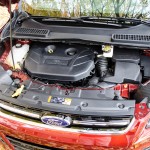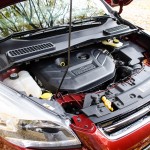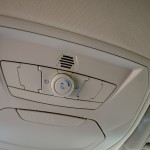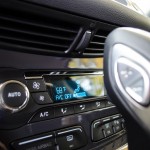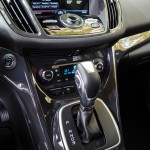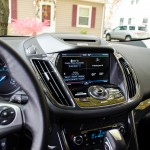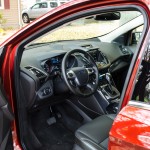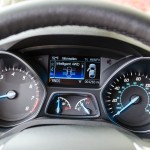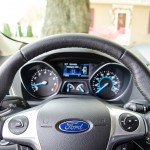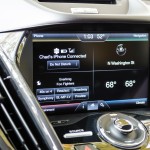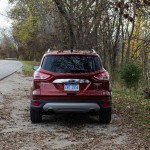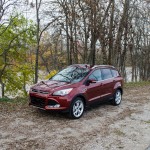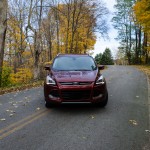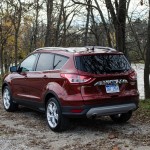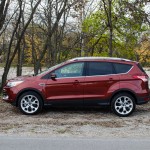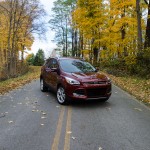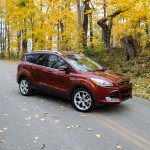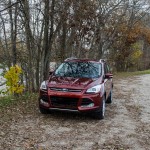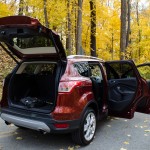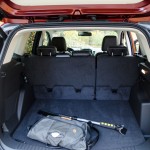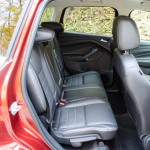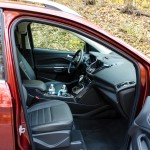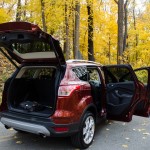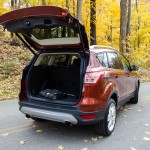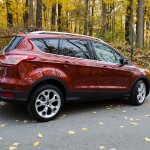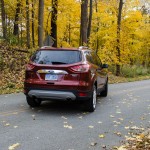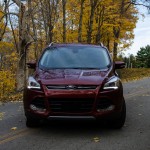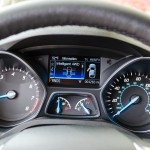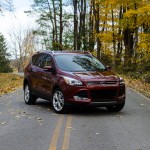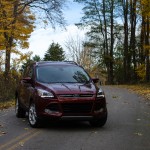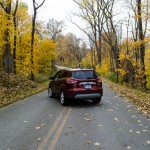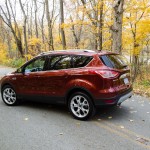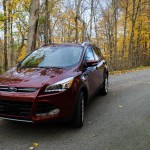Despite several launch concerns of potential fire hazards (and subsequent recalls), the Ford Escape has been a strong seller for the brand. Locally, these vehicles run rampant in all of the trim levels. To help better understand why the Escape is such a popular vehicle, I spent a week in a decked-out Titanium version to see what’s what. With great interior build quality, loads of standard and configurable features, along with decent fuel economy, I quickly discover why people are buying the vehicle and why you may want to consider it for your next small-SUV purchase.
Infinite Diversity in Infinite Combinations
Even though IDIC is something out of Star Trek, it is very appropriate with the 2014 Escape. In previous years, if you wanted to purchase the Escape in Titanium trim, you were required to get the 2.0L EcoBoost. That, fantastically, is no longer the case. The Titanium trim level can be equipped with either the 2.0L EcoBoost or the 1.6L EcoBoost variant. For those looking to save a few bucks, or get the best fuel efficiency possible, the 1.6L EcoBoost is a great engine. However, I would still opt for the 2.0L EcoBoost. On a bigger vehicle, the extra oomph is great for highway overtaking and helps move around the extra body weight of the 4WD unit better.
Continuing with the infinite combinations theme, the Escape Titanium can also be equipped with either 2WD or 4WD. The 4WD unit on our test model seemed to work well under normal driving conditions, and there is an information screen on the instrument cluster showing the driver which wheels are receiving power at what times. Standard behavior is for the vehicle to act like a front-wheel drive car, but even under light throttle application some power is sent to the rear wheels. Again, I would recommend the 4WD version. While there is nothing wrong with a front-wheel drive vehicle in most climates, fuel economy didn’t seem to suffer much and I appreciate the added versatility.
Our $35,635 (as equipped) test model arrived with the $1735 Titanium Technology Package. I do find this package both a nice option and a bit of a letdown. In previous years, high-intensity discharge (HID) headlamps were standard on the Titanium. Now they are part of this technology package. However, the technology package does come with the blind-spot detection (BLIS) and rear cross-traffic alert. Cross-traffic alert uses radar in the rear fenders to look for vehicles approaching from the sides in parking lots that the driver may not be able to see. I consider all of these technology systems great safety features that a purchaser should equip the vehicle with. The only thing I don’t particularly find all that valuable is the Active Park Assist. It is cool technology, but I think ultimately I’d prefer it to be an a la carte option and not bundled. Despite that, I believe the other safety features warrant the selection of the package. Below is a video of the active parking system in action.
One thing you’ll notice getting behind the wheel of the Escape (if you’ve driven other modern Ford vehicles) is that the interior is almost exactly like the Focus and the C-Max. In the past, automakers digging through the parts bin of other models to save money was a letdown. It’s the reason why the 6th generation Corvette had the steering wheel from the Chevrolet Cobalt. However, in modern Fords this is not a bad thing. As mentioned earlier, build quality is top notch, and there are redundant buttons for the climate control and stereo system in addition to the MyFord Touch system.
Wrapping up the options, the test vehicle also had the $795 navigation system and a $595 set of alloy luster wheels.
Driving Impressions and Fuel Economy
I was actually a bit surprised how the Escape with 4WD drove. Compared to the C-Max and Focus (which this vehicle shares a platform), the Escape feels the most like a “truck” than you’d think it would. Yes, you sit up higher in it, but there’s a bit more to that. It does not feel heavy, despite the higher curb weight than the other vehicles, and actually handles pretty well on my twisty test route.
The traditional 6-speed automatic can be shifted manually from the shifter, but there are no paddles on the steering wheel. Shift times are nothing to write home about, but the system works.
In everyday driving the steering wheel is a bit more of a joy. Gone are the “favorites” buttons of past MyFord Touch systems and replaced with a toggle to load the “Home” display on the MyFord Touch or the “Information” display. This layout was appreciated more, and I personally enjoy how big the SYNC voice command paddle is. Voice commands are supposed to make the driver less distracted, so having a nice big button to activate the voice commands makes a lot of sense to me.
The instrument cluster LCD display is also a piece I have mixed opinions on. It shows important information, like 4WD power transfer, fuel economy, miles to empty, and more. It even will show distance to the next turn if using the navigation system. However, it does not have the dual screen layout that is seen on the C-Max or higher-end Fords with the MyFord Touch system. Those extra screens are nice for showing redundant radio information as well. Ultimately, it shows me the really important stuff, I just would like to see more.
Space is decent, with plenty of room to haul children around with ease. On one occasion I hauled around 3 additional adults and no one complained about the space. Memory seats are also a nice feature, in case the vehicle is shared with more than one driver. Accessing the rear space couldn’t be easier, because the Titanium Escape is equipped with a “kick to open” feature. Below we demonstrate this feature on the C-Max Energi, but operation is identical.
Overall fuel economy for the week was decent for a four-wheel drive vehicle. I observed an average of 21.8mpg of mostly city driving. Expect about a 1-2mpg increase with the 1.6L model.
Conclusions and Final Verdict
Overall, I definitely enjoyed my time in the Escape Titanium. Titanium is definitely a trim level that means something, even if a few of the features end up as part of an option package. Standard push button start with intelligent access is a great feature that you get used to very quickly. Also, simple things like an automatically dimming rearview mirror and memory seats are nice touches.
The “Sunset Metallic” that my test model was painted in is a nice color, but I’m not sure if it’s the color I would get. It almost appears seasonal to me, looking at home with the fall leaves from the photo shoot, but not being all that attractive when snow is on the ground. However, color is a subjective taste, and I do think it does look nice.
The remote start feature is also nice. Many Fords (and other marques) that have remote start will look at the temperature outside the vehicle and automatically adjust the heat, air conditioning, and defrost accordingly. Little things like that are just intelligent and stuff that really makes life easier without being that noticeable.
The Escape’s natural competitor is the new Jeep Cherokee. The Toledo, Ohio built Cherokee was definitely a surprise to me when I drove it in Texas awhile back, and would love to have both vehicles in for a head-to-head comparison. The one thing swaying people from the Cherokee may be the looks, but it is a vehicle that Ford (and others) need to take seriously.
Overall though, I would recommend to the Escape to a friend if they were looking for this type of vehicle. I enjoy the features that can be equipped with it, and if you are someone who doesn’t like the entire “touch sensitive” nature of MyFord Touch, the Escape provides a great compromise by offering many tactile buttons as well.
Is $35,000 a lot of money for a four-wheel drive Focus with worse fuel economy? Maybe. But a Focus cannot be equipped with this level of technology at all. Also, the Escape carries luxury features without a pretentious badge. For some, that is a positive. The overall advantage to the Escape is there is a trim level and option combination for everyone. Regardless of price, everyone gets an Escape, it’s just a matter of what they want on it. Ultimately, I believe that positioning is smart marketing for Ford, and the diversity makes almost every Escape unique.
Note: Vehicle provided by the Ford Motor Company.














